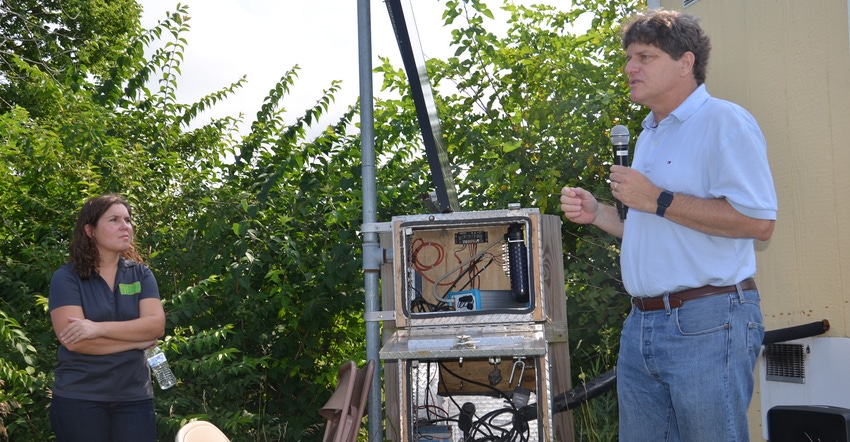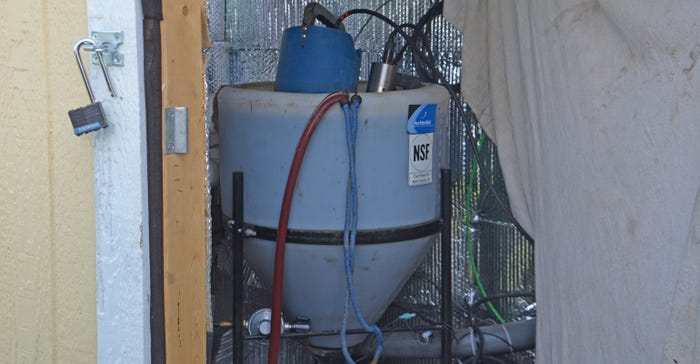
Automated water sampling on a stream in Hendricks County, Ind., that feeds into Eagle Creek reservoir never stops. Tonight, while you sleep, every 15 minutes like clockwork, two automated sampling stations located about 1 mile apart will pull water samples from the stream. It doesn’t matter which day of the year you read this story — these samplers work 365 days per year.
“That is what is amazing about this technology,” says Jeff Frey of the U.S. Geological Survey, the agency that installed and maintains these units. “In the old days, we would grab a sample and take it to the lab. It might be a while before another sample was taken. It was easy to miss events that could cause a spike in runoff or flow of nutrients down a stream,” he says.
“Today, we aren’t going to miss those events. I even monitor what’s going on through my phone. We get a much clearer picture of what’s happening.”
Why 2 stations
While USGS has several monitoring stations in Indiana, it’s unusual to have two close together, Frey says. USGS elected to put in a pair of samplers so it could measure quality of water coming from an area where most farmers practice conventional farming, and then measure it downstream after it passes thought an area where most fields are no-tilled and cover crops have been standard procedure for roughly 20 years.
USGS isn’t the only group interested in assessing water quality here. Mike Starkey, who no-tills and farms the land between the two stations, says Bob Barr, a professor at Indiana University-Purdue University, Indianapolis, initiated a study years ago when Indianapolis Water Co. authorities asked him to find out what was happening along that stream.
Other parties are involved, too. Six years ago, a study was initiated to compare fertilizing by Tri-State recommendations on one side of the stream vs. fertilizing by Starkey’s normal practices, which involve far less fertilizer application, on the other side. That study will conclude soon, with results hopefully available next year.
Early impressions
Some groups working in the stream draw samples from tile lines. Starkey says tile is even more important once you’ve been in no-till and cover crops for a long time. More water infiltrates the soil, and there is more water to move out. He’s pattern-tiling some long-term no-till and cover crop fields, even though it means some disturbance to the surface.

The samplers that Frey oversees sample stream flow and concentration of nutrients in the stream. It’s not a cheap operation. Operating the sampler for a year costs about $60,000, he says.
He’s hoping the information they obtain will be invaluable. So far, these samplers haven’t been running long enough to have confidence in trends.
“Based on what we’ve seen elsewhere, we’re confident that following best management practices is having an effect,” Frey says. “I’m convinced that cover crops and filter strips like the ones along this stream are the key to keeping phosphorus in the field.”
About the Author(s)
You May Also Like




